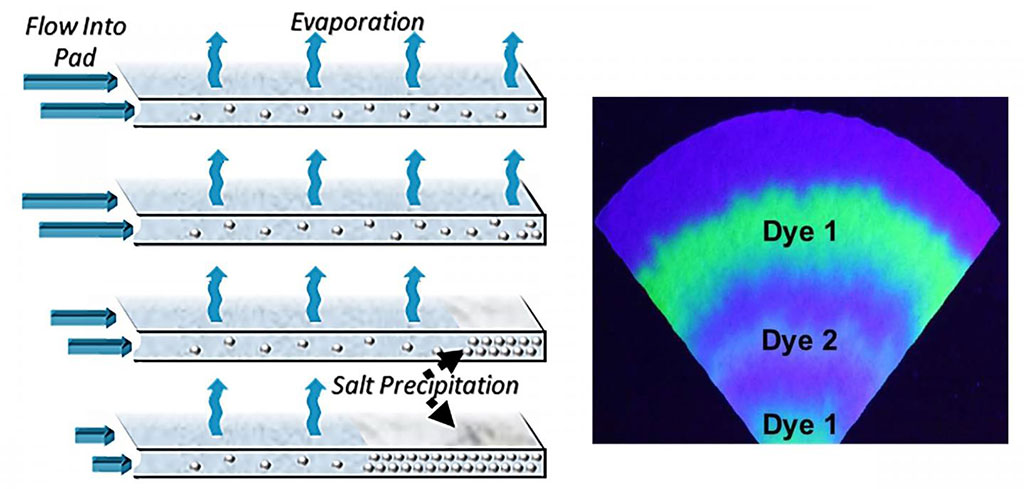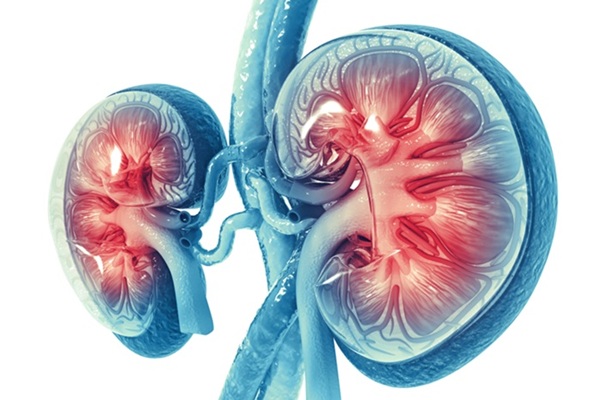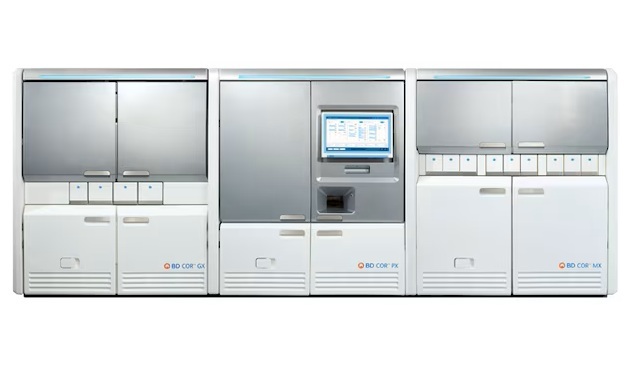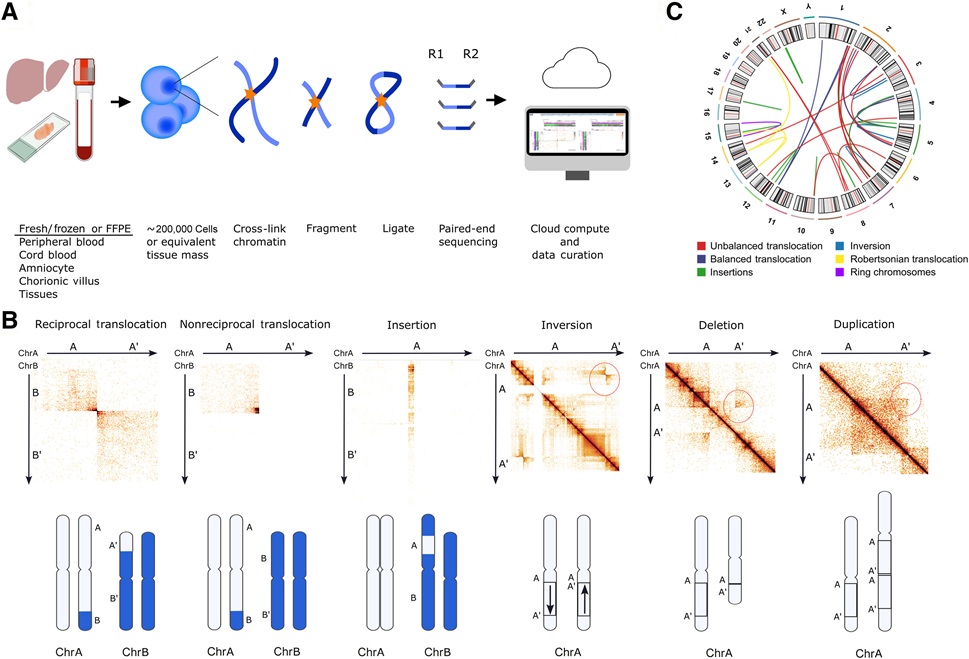A Simple Paper-Based, Wearable Device for Long Term Sweat Analysis
|
By LabMedica International staff writers Posted on 16 Jun 2020 |

Image: The evaporation of sweat on paper pads could be used for fluid transport in a wearable device over long periods of time. The resulting dry layer of caked salts would preserve a `time-stamped` record of biomarkers of interest (Photo courtesy of Dr. Orlin D. Velev and co-authors, North Carolina State University)
By cleverly manipulating paper geometry, researchers created a paper-based wearable device to collect, transport, and analyze sweat for an extended period.
Sweat can be used to obtain an exact measurement of concentrations of medications in the blood. Furthermore, the concentrations of stress biomarkers (hormones and neurotransmitters) in bodily fluids such as sweat predict the physical and mental state of the individual.
A major problem that has so far restricted the use of wearable paper-based sweat sensors is that sweat contains salt, which, upon evaporation, becomes deposited on the device and interferes with fluid flow. To solve this problem, investigators at North Carolina State University (Raleigh, USA) characterized and analyzed how capillary action and evaporation could cooperatively be used to transport and process a sweat-like fluid containing dissolved salts and model analytes.
The investigators postulated that the joint action of capillary wicking and evaporation would sustain continuous and long-term withdrawal of the sweat-like fluid. In the laboratory they then demonstrated that paper strips of controlled geometry could passively pump fluid for sensing purposes for long duration. Thus, non-invasive osmotic extraction combined with paper microfluidics and evaporative disposal enabled sweat collection and monitoring for periods exceeding 10 days. Since the process was driven by the liquid wicking through paper, the device did not require an external power source.
The investigators also demonstrated that the salt film deposited at the evaporation pad would eventually lead to cessation of the process but at the same time would preserve a record of analytes that could be used for long-term biomarker monitoring in sweat.
"We expected that the flow of the model sweat will be suppressed by the deposition of a salt layer inside the drying pad," said senior author Dr. Orlin Velev, professor of chemical and biomolecular engineering at North Carolina State University. "By following the flow of model sweat, we found, quite surprisingly, that such a simple paper construct can achieve continuous sweat pumping and disposal for very long periods."
The wearable device for sweat analysis was described in the June 9, 2020, online edition of the journal Biomicrofluidics.
Related Links:
North Carolina State University
Sweat can be used to obtain an exact measurement of concentrations of medications in the blood. Furthermore, the concentrations of stress biomarkers (hormones and neurotransmitters) in bodily fluids such as sweat predict the physical and mental state of the individual.
A major problem that has so far restricted the use of wearable paper-based sweat sensors is that sweat contains salt, which, upon evaporation, becomes deposited on the device and interferes with fluid flow. To solve this problem, investigators at North Carolina State University (Raleigh, USA) characterized and analyzed how capillary action and evaporation could cooperatively be used to transport and process a sweat-like fluid containing dissolved salts and model analytes.
The investigators postulated that the joint action of capillary wicking and evaporation would sustain continuous and long-term withdrawal of the sweat-like fluid. In the laboratory they then demonstrated that paper strips of controlled geometry could passively pump fluid for sensing purposes for long duration. Thus, non-invasive osmotic extraction combined with paper microfluidics and evaporative disposal enabled sweat collection and monitoring for periods exceeding 10 days. Since the process was driven by the liquid wicking through paper, the device did not require an external power source.
The investigators also demonstrated that the salt film deposited at the evaporation pad would eventually lead to cessation of the process but at the same time would preserve a record of analytes that could be used for long-term biomarker monitoring in sweat.
"We expected that the flow of the model sweat will be suppressed by the deposition of a salt layer inside the drying pad," said senior author Dr. Orlin Velev, professor of chemical and biomolecular engineering at North Carolina State University. "By following the flow of model sweat, we found, quite surprisingly, that such a simple paper construct can achieve continuous sweat pumping and disposal for very long periods."
The wearable device for sweat analysis was described in the June 9, 2020, online edition of the journal Biomicrofluidics.
Related Links:
North Carolina State University
Latest Technology News
- AI Model Achieves Breakthrough Accuracy in Ovarian Cancer Detection
- Portable Biosensor Diagnoses Psychiatric Disorders Using Saliva Samples
- Cell-Sorting Device Uses Electromagnetic Levitation to Precisely Direct Cell Movement

- Embedded GPU Platform Enables Rapid Blood Profiling for POC Diagnostics
- Viral Biosensor Test Simultaneously Detects Hepatitis and HIV
- Acoustofluidic Device to Transform Point-Of-Care sEV-Based Diagnostics
- AI Algorithm Assesses Progressive Decline in Kidney Function
- Taste-Based Influenza Test Could Replace Nasal Swabs with Chewing Gum
- 3D Micro-Printed Sensors to Advance On-Chip Biosensing for Early Disease Detection
- Hybrid Pipette Combines Manual Control with Fast Electronic Aliquoting
- Coral-Inspired Capsule Samples Hidden Bacteria from Small Intestine
Channels
Clinical Chemistry
view channel
VOCs Show Promise for Early Multi-Cancer Detection
Early cancer detection is critical to improving survival rates, but most current screening methods focus on individual cancer types and often involve invasive procedures. This makes it difficult to identify... Read more
Portable Raman Spectroscopy Offers Cost-Effective Kidney Disease Diagnosis at POC
Kidney disease is typically diagnosed through blood or urine tests, often when patients present with symptoms such as blood in urine, shortness of breath, or weight loss. While these tests are common,... Read moreHematology
view channel
ADLM’s New Coagulation Testing Guidance to Improve Care for Patients on Blood Thinners
Direct oral anticoagulants (DOACs) are one of the most common types of blood thinners. Patients take them to prevent a host of complications that could arise from blood clotting, including stroke, deep... Read more
Viscoelastic Testing Could Improve Treatment of Maternal Hemorrhage
Postpartum hemorrhage, severe bleeding after childbirth, remains one of the leading causes of maternal mortality worldwide, yet many of these deaths are preventable. Standard care can be hindered by delays... Read more
Pioneering Model Measures Radiation Exposure in Blood for Precise Cancer Treatments
Scientists have long focused on protecting organs near tumors during radiotherapy, but blood — a vital, circulating tissue — has largely been excluded from dose calculations. Each blood cell passing through... Read moreImmunology
view channel
Chip Captures Cancer Cells from Blood to Help Select Right Breast Cancer Treatment
Ductal carcinoma in situ (DCIS) accounts for about a quarter of all breast cancer cases and generally carries a good prognosis. This non-invasive form of the disease may or may not become life-threatening.... Read more
Blood-Based Liquid Biopsy Model Analyzes Immunotherapy Effectiveness
Immunotherapy has revolutionized cancer care by harnessing the immune system to fight tumors, yet predicting who will benefit remains a major challenge. Many patients undergo costly and taxing treatment... Read moreMicrobiology
view channel
15-Minute Blood Test Diagnoses Life-Threatening Infections in Children
Distinguishing minor childhood illnesses from potentially life-threatening infections such as sepsis or meningitis remains a major challenge in emergency care. Traditional tests can take hours, leaving... Read more
High-Throughput Enteric Panels Detect Multiple GI Bacterial Infections from Single Stool Swab Sample
Gastrointestinal (GI) infections are among the most common causes of illness worldwide, leading to over 1.7 million deaths annually and placing a heavy burden on healthcare systems. Conventional diagnostic... Read morePathology
view channel
AI Tool Improves Accuracy of Skin Cancer Detection
Diagnosing melanoma accurately in people with darker skin remains a longstanding challenge. Many existing artificial intelligence (AI) tools detect skin cancer more reliably in lighter skin tones, often... Read more
Highly Sensitive Imaging Technique Detects Myelin Damage
Damage to myelin—the insulating layer that helps brain cells function efficiently—is a hallmark of many neurodegenerative diseases, age-related decline, and traumatic injuries. However, studying this damage... Read moreTechnology
view channel
AI Model Achieves Breakthrough Accuracy in Ovarian Cancer Detection
Early diagnosis of ovarian cancer remains one of the toughest challenges in women’s health. Traditional tools such as the Risk of Ovarian Malignancy Algorithm (ROMA) can struggle to distinguish between... Read more
Portable Biosensor Diagnoses Psychiatric Disorders Using Saliva Samples
Early diagnosis of psychiatric disorders such as depression, schizophrenia, and bipolar disorder remains one of medicine’s most pressing challenges. Current diagnostic methods rely heavily on clinical... Read more
Cell-Sorting Device Uses Electromagnetic Levitation to Precisely Direct Cell Movement
Sorting different cell types—such as cancerous versus healthy or live versus dead cells—is a critical task in biology and medicine. However, conventional methods often require labeling, chemical exposure,... Read moreIndustry
view channel
Co-Diagnostics Forms New Business Unit to Develop AI-Powered Diagnostics
Co-Diagnostics, Inc. (Salt Lake City, UT, USA) has formed a new artificial intelligence (AI) business unit to integrate the company's existing and planned AI applications into its Co-Dx Primer Ai platform.... Read more























